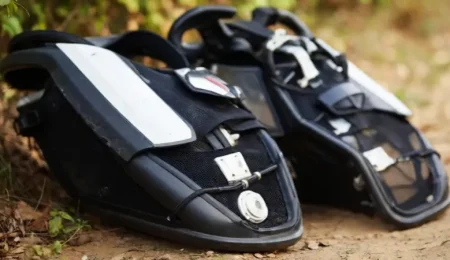When it comes to motocross, safety should be your top priority. One of the most essential pieces of gear you’ll need is a high-quality motocross helmet. With so many options available on the market, selecting the right helmet can be daunting. This guide will walk you through the critical aspects of picking a motocross helmet suited to your needs, ensuring both safety and comfort.
Understanding the Importance of a Motocross Helmet
Before diving into the choices available, it’s crucial to understand why a motocross helmet is vital. Helmets are designed to protect your head in the event of a crash, reducing the risk of serious injury. A well-fitted helmet can absorb impact and safeguard your skull, brain, and neck. Therefore, investing time in understanding the features of a suitable helmet can make a significant difference in your safety on the track.
Key Features to Consider
Safety Standards
The first thing you should check is whether the helmet meets safety standards. In the United States, look for helmets that comply with the DOT (Department of Transportation) and Snell Memorial Foundation certifications. These certifications ensure that the helmet has undergone rigorous testing for impact resistance and structural integrity.
Fit and Comfort
A helmet can only provide the protection you need if it fits properly. Follow these steps to determine the right size:
- Measure Your Head: Use a soft tape measure and wrap it around the widest part of your head, just above your ears. Note the measurement in centimeters or inches.
- Consult Size Charts: Different manufacturers may have varying sizing charts. Refer to the manufacturer’s size chart to find your corresponding helmet size.
- Try It On: If possible, visit a sporting goods store to try on different helmets. It should fit snugly but not uncomfortable. Ensure that it sits level on your head.
Weight
Weight is another critical factor to consider. Heavier helmets might provide more protection but can lead to fatigue during long rides. Try to find a balance between protection and weight. Many manufacturers now offer lightweight options without compromising safety standards.
Ventilation
Ventilation is vital, especially during intense rides where you may sweat. Helmets equipped with adequate ventilation systems promote airflow, keeping you cool and comfortable. Look for adjustable vents that allow you to control the airflow depending on the weather conditions.
Visor Style
The visor of your helmet serves both functional and aesthetic purposes. Functionally, it protects your eyes from debris and sunlight. When choosing a helmet, consider the following about the visor:
- Adjustability: Some visors are adjustable, allowing you to customize the angle for better visibility.
- Tinted Options: Depending on your preference, tinted visors can help reduce glare in bright conditions, but they may also limit visibility in low-light situations.
Padding and Liner
The inner lining of the helmet is crucial for comfort and shock absorption. Look for:
- Soft-foam Padding: This helps absorb impact and provides a snug fit.
- Removable and Washable Liners: Being able to wash the interior can help maintain hygiene, especially if you ride frequently.
Cost and Brand Reputation
While it might be tempting to go for the cheapest option, investing in a reputable brand often ensures better quality and safety features. Compare helmets from well-known brands that specialize in motocross gear. It’s wise to read reviews and seek feedback from other riders about their experiences with specific helmet models.
Types of Motocross Helmets
Now that you know what features to look for, it’s essential to understand the different types of motocross helmets available:
Full-Face Helmets
Full-face helmets provide maximum protection as they cover the entire head, chin, and face. They are a favorite among serious motocross riders but may feel heavier or less ventilated than other options.
Off-Road Helmets
These helmets are designed specifically for off-road riding. They typically feature excellent ventilation and a peak visor to deflect dirt and stones. However, they often lack a face shield, meaning additional goggles are necessary.
Modular Helmets
These helmets are a hybrid between full-face and open-face designs. They allow the chin bar to lift, providing versatility. While they do offer some protection, many serious riders may prefer more traditional styles.
Youth Helmets
If you’re buying for younger riders, pay close attention to the sizing and fit geared toward children. Always ensure the helmet meets safety standards appropriate for their age group.
Tips for Maintaining Your Motocross Helmet
Once you have chosen the right helmet, proper care will ensure its longevity and performance. Here are some maintenance tips:
- Regular Cleaning: Wipe the exterior with a damp cloth after every ride, and wash the inner liner according to the manufacturer’s instructions.
- Check for Damage: Inspect your helmet regularly for any cracks or damage, especially after falls. If you notice any damage, replace it immediately.
- Store Properly: Store your helmet in a cool, dry place away from direct sunlight to prevent material degradation.
Conclusion
Choosing the right motocross helmet doesn’t have to be overwhelming. By understanding the essential features, trying helmets on for fit, and considering your riding style, you can make an informed decision. Remember, a helmet is a critical piece of safety gear, and investing in a quality one can protect you during thrilling rides on challenging terrains. Always prioritize your safety and enjoy the adventure of motocross!





Leave a Reply